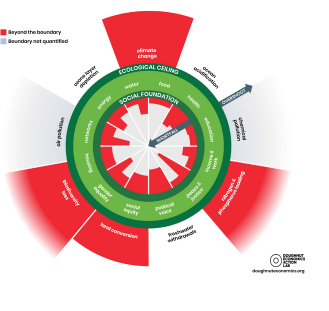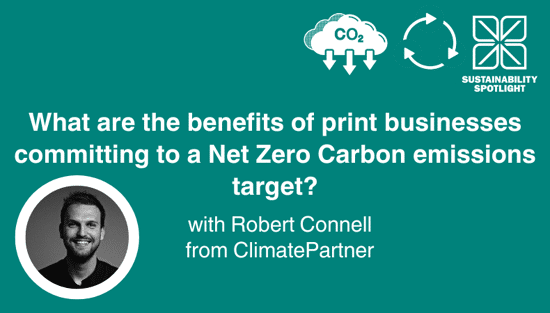Circular Economy, Sustainable Materials and Carbon FootPrinting
_1.png?width=750)
Sustainability is a journey for all businesses and it is important for businesses to take into use sustainable materials, be aware of the UN SDGs, aim to become more circular and to ensure their business is carbon footprinting.
Choosing the Right Sustainable Material To Print On
Sustainability is a journey for any business and choosing sustainable materials to print on is only one of many paths to choose from to make this feasible. Today, there are several highly innovative materials that can be used when printing. However, it is important to take into account the various factors when choosing the right material.
It is important to take into account the life cycle of each material, from raw materials to the manufacturing, the processes used and more.
- Think circular
- Protecting resources
- Protecting biodiversity and avoiding deforestation
- Energy efficiency
- Minimising pollution
- What will you be doing to the material?
In addition, it is crucial to think about the current social issues when you are making sustainable choices for your business. It is necessary to ask your suppliers what they are doing to tackle and improve social issues.
For more information on choosing the right material for your business and tackling social issues please read here.
UN SDGs and Circular Economy
By accessing the right guidance for your business can truly allow your business to become more sustainable.

The United Nations Sustainable Development Goals (UN SDGs) were first published in 2015 and cover all areas of sustainability that focuses on peace and prosperity for people and the planet, now and further into the future. For more information on the UN SDGs including yearly progress reports and Global Sustainable Development Reports please visit here.
The Circular EconomyThe circular economy model is designed to prevent both waste and pollution to ensure that the materials are being circulated and also to regenerate nature. The Ellen MacArthur Foundation are a charity who are fully committed to creating a circular economy, it is an economic system that delivers better outcomes for both people and the environment.
Doughnut Economics provides a deeper analysis and addresses not just the issue with the overuse of resources and pollutants but also looks at the shortfall for meeting people’s basic needs.

For more information on general guidance for your business and other organisations that can support your business such as WRAP, Edie and Future-Fit Business please read here.
Carbon Footprinting
Carbon Footprinting offers businesses an understanding of their contribution towards climate change. The term ‘carbon’ encompasses all key greenhouse gas emissions where carbon dioxide is used as the main reference point. There are various, available tools that can help businesses make these calculations.
Caption: Watch this video that features FESPA and CarbonQuota that offers advice for printers who are looking to take their first step towards measuring carbon.
How to successfully calculate your carbon footprint?
-
Use online tools such as the GHG Protocol which is a global set of standards and tools. This is most widely used and is free and easy to download.
-
Use external support such as consultancies like ClimateCalc and CarbonQuota who are specific to printing. ClimateCalc is based on the Intergraf recommendations on CO2 emissions that has been calculated for the printing industry. It is the only international carbon calculator for print that is strictly in line with relevant standards. CarbonQuota is a carbon management business that specialises in the packaging and print sector. They work with the value chain from the world’s largest FMC businesses through to manufacturers of product. They have successfully automated the product carbon footprint process via an API connection. Additionally, The United Nations Climate Neutral Now has various, useful resources.
.png?lang=en-GB)
The more detail that you include in your footprint, the more useful it will be in determining what to prioritise first. The full footprint for a business is divided into 3 types known as ‘scopes’. Most businesses begin with scope 1 and scope 2 as they are easier to measure.
Scope 1 – this relates to the direct emissions generated by your business. These include gas, LPG, oil, diesel or petrol that is owned or burned. In addition, this also includes any leakages or greenhouse gases or other chemical emissions.
Scope 2 – this includes emissions that are generated by energy that your business purchases. This includes electricity that is bought and can be determined by checking your electricity bills and calculators such as the GHG Protocol.
Scope 3 – this is a more complex category and is related to emissions that are generated due to business’s activities and can include factors such as staff travel to and from work, goods and services that are bought or supplied, emissions created by treatment of recycling, waste and waters and emissions generated by products that are being used. These factors can vary depending on the nature of your business. Due to the complexity and difficulty in receiving the data that is required, most businesses tackle one category at a time.
For more information on how to successfully carbon footprint your business please read here.
Recent news

A revised look at sustainability in wide format print
Sustainability is crucial for wide-format print, moving beyond marketing to an imperative driven by brands and regulations. Common "eco" claims often mask complexities; true sustainability demands carbon reduction as a core principle. Life Cycle Assessment (LCA) offers data-driven insights for genuine environmental improvement, as demonstrated by UFABRIK's transparent approach.

Empowering the Print Community – Insights from Suzi Ward, MD of FESPA UK
In this podcast episode, Debbie McKeegan interviews Suzi Ward, the Managing Director of Fespa UK, discussing the evolution of the association, its role in supporting the print industry, and the importance of community engagement.
.png?width=550)
The European Union is driving massive sustainability change
The EU's ambitious Green Deal, aiming for climate neutrality by 2050, drives significant sustainability changes. Businesses worldwide, especially printers, must adapt to complex EU legislation. Compliance creates challenges but also new opportunities in areas like packaging and signage.

What are the benefits of print businesses committing to a Net Zero Carbon emissions target?
We speak to Robert Connell, Senior Commercial Sustainability Manager at ClimatePartner who who offer solutions along the net zero cycle to support business’s effort in corporate climate action. In this discussion we discuss the importance and the process and benefits of businesses committing to a Net Zero Carbon emissions target.